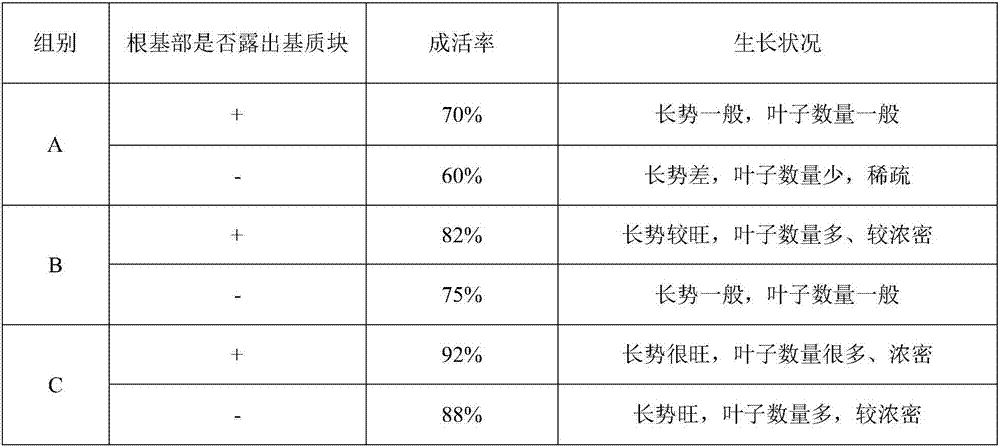Method for restoring understory vegetation and constructing Lingnan indigenous ground-cover landscape from garden waste and indigenous plants
A technology for garden waste and native plants, applied in the fields of botanical equipment and methods, plant cultivation, planting substrates, etc., can solve problems such as difficulty in finding suitable places for stacking in urban central areas, waste of garden resources, etc., to achieve low purchase costs, promote Plant growth, effects from a wide range of sources
- Summary
- Abstract
- Description
- Claims
- Application Information
AI Technical Summary
Problems solved by technology
Method used
Image
Examples
Embodiment 1
[0027] Example 1: Using garden waste and native plants to restore understory vegetation and create a land cover landscape in Lingnan Township
[0028] Specific project location: Under the trees on the sidewalk of Dongguan Botanical Garden
[0029] (1) Collection and treatment of garden waste: Separate the branches and fallen leaves from the garden waste collected in the gardening management and maintenance work of the botanical garden in 2015, and crush the fallen leaves and branches with a pulverizer to obtain fallen leaves and branches respectively. Dry crushed matter, fallen leaf crushed matter becomes sawdust, and branch length of branch crushed matter is less than 3 cm.
[0030] (2) Fermentation of garden waste: Stir the crushed leaves and crushed branches evenly according to the volume ratio of 5:1, put them in a cement pool and soak them in cold water for 7 days, drain the water, cover them with a plastic film, and dry them naturally in the autumn and winter of 2015. F...
Embodiment 2
[0040]Example 2: Utilizing garden waste and native plants to build understory vegetation landscape
[0041] Specific project location: Under the trees on the sidewalk of the campus of Guangdong Environmental Protection Engineering Vocational College
PUM
| Property | Measurement | Unit |
|---|---|---|
| particle diameter | aaaaa | aaaaa |
| length | aaaaa | aaaaa |
Abstract
Description
Claims
Application Information
 Login to View More
Login to View More - R&D
- Intellectual Property
- Life Sciences
- Materials
- Tech Scout
- Unparalleled Data Quality
- Higher Quality Content
- 60% Fewer Hallucinations
Browse by: Latest US Patents, China's latest patents, Technical Efficacy Thesaurus, Application Domain, Technology Topic, Popular Technical Reports.
© 2025 PatSnap. All rights reserved.Legal|Privacy policy|Modern Slavery Act Transparency Statement|Sitemap|About US| Contact US: help@patsnap.com

